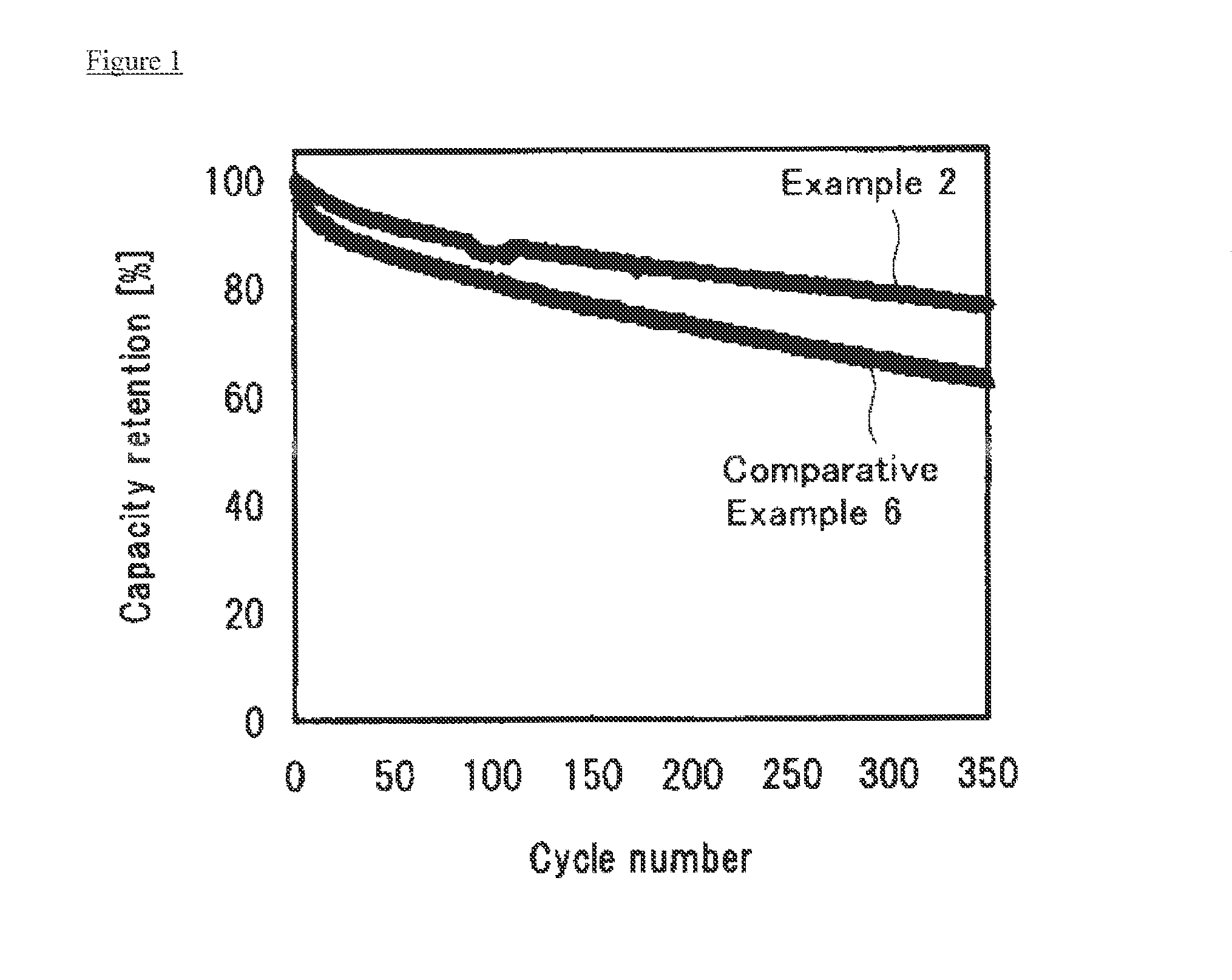Carbonaceous material for negative electrodes of nonaqueous electrolyte secondary batteries and method for producing same
a secondary battery and carbonaceous material technology, applied in the direction of batteries, cell components, electrochemical generators, etc., can solve the problems of large and expensive lithium-ion secondary batteries for vehicles, poor repeat performance of charge-discharge, and inability to easily exchange in the middle of the life of the vehicle, etc., to achieve excellent electrical characteristics, reduce resistance of a negative electrode, and efficiently remove the
- Summary
- Abstract
- Description
- Claims
- Application Information
AI Technical Summary
Benefits of technology
Problems solved by technology
Method used
Image
Examples
example 1
[0081]Nitrogen gas containing 1 volume % of hydrogen chloride gas was supplied at a flow rate of 10 L / minute to 100 g of the palm shell char A with a diameter of 2.360 to 0.850 mm (containing 98 weight % of particles with diameter of 2.360 to 0.850 mm) which was obtained by crushing palm shells and carbonizing the crushed palm shells at 500° C. After the above treatment for 80 minutes at 950° C., only the hydrogen chloride gas supply was cut off, and further the resulting palm shell char A was treated for 30 minutes at 950° C. to obtain the heat treated-palm shell carbon B. The resulting heat treated-palm shell carbon was preliminarily pulverized by ball mill to become pre-pulverized carbon with an average particle diameter of 8 μm, and the resulting carbon was pulverized and classified by a compact jet mill (Co-Jet System α-mkIII). The resulting powdery carbon precursor was placed in a horizontal, tubular furnace and subjected to final heat treatment at 1200° C. for 1 hour under a ...
example 2
[0082]The procedure described in Example 1 was repeated, except that the average particle diameter was 11 μm, to obtain the carbonaceous material 2.
example 3
[0083]The procedure described in Example 1 was repeated, except that the average particle diameter was 15 μm, to obtain the carbonaceous material 3.
PUM
 Login to View More
Login to View More Abstract
Description
Claims
Application Information
 Login to View More
Login to View More - R&D
- Intellectual Property
- Life Sciences
- Materials
- Tech Scout
- Unparalleled Data Quality
- Higher Quality Content
- 60% Fewer Hallucinations
Browse by: Latest US Patents, China's latest patents, Technical Efficacy Thesaurus, Application Domain, Technology Topic, Popular Technical Reports.
© 2025 PatSnap. All rights reserved.Legal|Privacy policy|Modern Slavery Act Transparency Statement|Sitemap|About US| Contact US: help@patsnap.com

